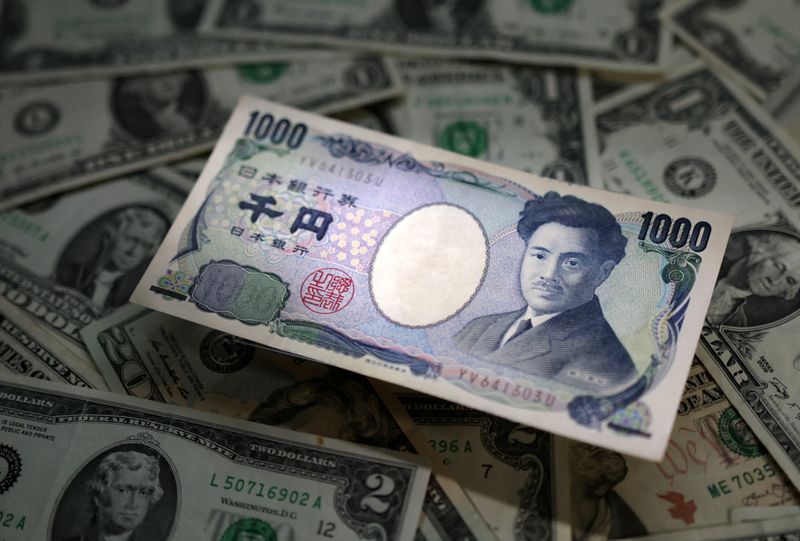Yen gets a lift as verbal intervention picks up, dollar heads for weekly rise
By Ozan Ergenay and Rae Wee
LONDON (Reuters) -The yen found some support on Friday as Japanese officials stepped up their verbal intervention to stem the currency’s decline, while the dollar was on track for its biggest weekly rise in six weeks.
The yen popped higher after Japanese Finance Minister Satsuki Katayama said intervention was a possibility to deal with excessively volatile and speculative moves, leaving traders on alert for signs of yen buying from Tokyo.
“The warning overnight from the Japanese government was certainly a step up from what we’ve seen recently,” said Lee Hardman, senior currency economist at MUFG.
“That’s helping provide more support for the yen in the near term.”
The Japanese currency rose 0.4% to 156.82 per dollar, though it remained close to Thursday’s 10-month trough of 157.90 and was still on track to lose 1.5% for the week.
Much of the focus in currency markets this week has been on the yen, which has plumbed fresh lows as investors worry about the nation’s worsening fiscal position brought about by Prime Minister Sanae Takaichi’s lavish spending policies.
The yen has fallen around 6% since Takaichi was elected leader of her party on October 4.
Takaichi’s cabinet approved a 21.3 trillion yen ($135.4 billion) economic stimulus package on Friday.
“The elephant in the room now is mounting intervention risks,” said Vishnu Varathan, head of macro research for Asia ex-Japan at Mizuho. “Interventions are likely to be opportunistic and short-lived. Essentially, speed bumps, not barricades.”
Tokyo last spent 5.53 trillion yen, or nearly $37 billion, in July 2024 to intervene in the foreign exchange market to haul the yen away from 38-year lows.
Against the euro, the yen was pinned near its lowest since the introduction of the single currency, although the euro was last down 0.5% at 180.61 yen.
FED CUT BETS RECEDE
In the broader market, the dollar was set for a weekly gain with markets still split on whether the Federal Reserve will cut rates again next month.
The release of a delayed U.S. nonfarm payrolls report on Thursday painted a mixed picture of the country’s labour market and did little to alter expectations about a Fed rate cut in December, as policymakers continue to navigate through an economic fog brought about by the U.S. government shutdown.
New York Fed President John Williams on Friday said the central bank could still cut rates in the near term, prompting markets to add to bets for a rate cut next month.



Leave a Comment
Your email address will not be published. Required fields are marked *